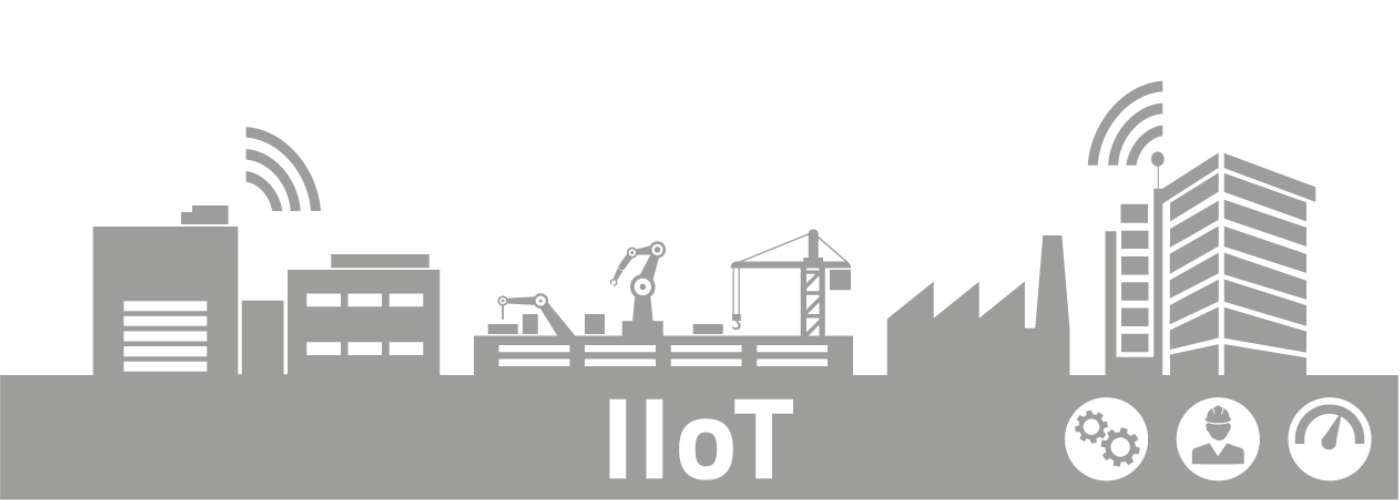
Industrial Internet of Things / IIoT – Smart Factory Glossary
The Industrial Internet of Things, or IIoT for short, describes the digital networking of smart machines and systems in the manufacturing environment. Its aim is to achieve the status of a self-organized production.
Examples of the Industrial Internet of Things:
- Data transfer from IIoT sensors
- Digital machine connection
- Manual data collection
- Providing information to the shop floor
- Flexible operator guidance

How does the (Industrial) Internet of Things work?
Let us use the example of an everyday workflow, such as the package tracking, to illustrate the principles of how the IIoT works:
- The package is uniquely identified from the moment it leaves you and at every further station along the shipping process, such as the sorting and distribution center and the loading into the delivery van.
- The packaging industry uses 1D bar codes or 2D codes (matrix codes such as QR codes) for identification. The codes include all required shipping details.
- The current package status is automatically stored in the central data system and can be accessed from all over the network.
- In other words, a digital image of reality is created, and the recipient can use this image to trace back the current package status.
- Every piece of data collected from the real world directly improves the resulting digital model.
The same applies in manufacturing: Ideally, machines are digitally connected to a Manufacturing Execution System, and important data is collected automatically or entered manually by the operator. The more data is available about a machine, order, and product, the better reality can be planned, controlled, analyzed, and predicted. MPDV's Smart Factory Elements model describes this control loop of the Smart Factory in detail.
What is an IIoT Connector used for?
An IIoT Connector is often a good solution to integrate older machines and systems into the manufacturing IT. It can record analog and digital input signals. The IIoT Connector therefore allows to integrate nearly all machines of a diverse machinery into the network. It is then possible to transfer operating signals to the system and document the machine status, i.e. is the machine running or not? This real-time data can be used to monitor the machines with a Manufacturing Execution System (MES) such as HYDRA. In addition, such a system can calculate KPIs or generate evaluations about past periods by analyzing the data collected.
What is the difference between IIoT and IoT?
The Internet of Things (IoT) defines objects of the real world that are networked in the virtual world. As the name suggests, the devices are connected to the Internet. Many of these objects have already become an integral part of our everyday life and can be found in many areas. Common examples are autonomous cars, networked lighting systems, or voice-controlled speakers, which in turn are used to control other smart home devices.
Whereas the IoT encompasses all objects connected to the virtual world, the IIoT focuses on industrial applications. IIoT buzzwords are the Functionally Networked Factory and the Digital Twin of manufacturing.
What is the difference between IIoT, MES, and ERP?
IIoT, MES and ERP have one thing in common: they all collect and process data. Although each of these systems has a different focus, there are no clear boundaries between them. In manufacturing, the IIoT and the MES have a major role.
- The IIoT has a technical orientation and focuses on machine utilization and performance. It uses sensors to collect temperature and speed of a machine, for example, or documents status changes with the help of operating signals. Historic data can be analyzed. However, the analyses and the resulting optimizations are always closely linked to the machine in question.
- The MES operates at an organizational level with the aim of optimizing workflows in production, and thus increasing efficiency. The MES uses the technical data from the IIoT and integrates this data into a business context. This is possible because the MES combines a large amount of information from different areas. The MES does not only know about the machine status, the system also knows if the collected quantity is yield or scrap quantity, and how many pieces still need to be produced to complete the order. Functionalities and information are globally available for all assets.
- The ERP controls the company's processes and includes business aspects at company level. It also uses the data from the MES to achieve even more precise results.
All three systems are designed to create transparency and increase efficiency. But only if IIoT, MES, and ERP interact optimally, companies can fully exploit their potential. Connecting and networking all applications is therefore key to guarantee that each system can perfectly execute its task.
Would you like more information? We are happy to help.
Send us an e-mail. We will take care of your inquiry promptly.